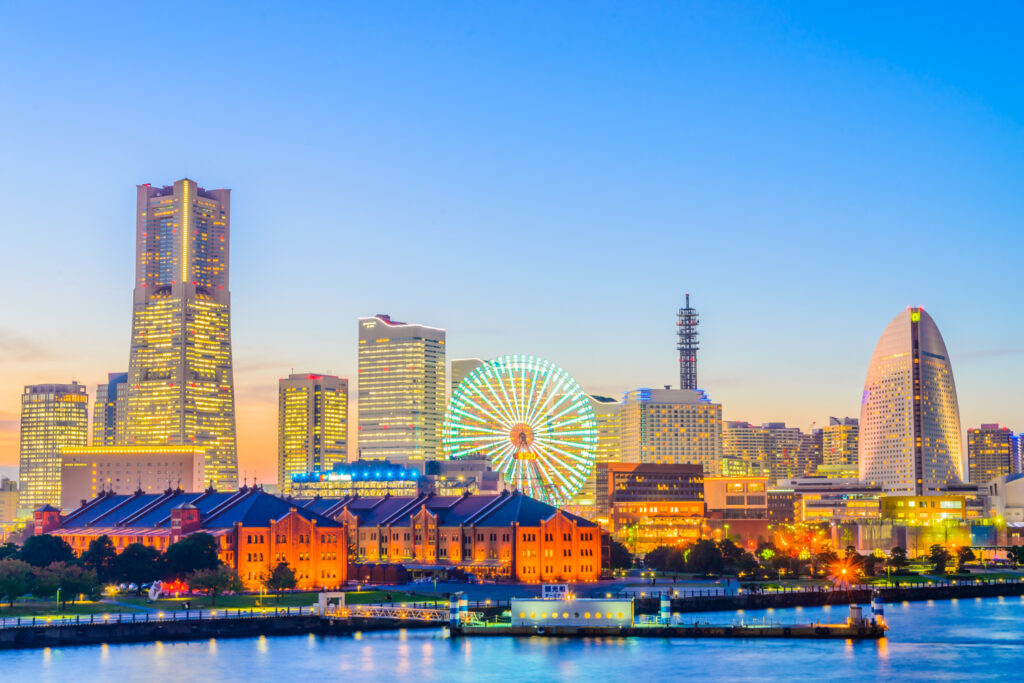Italy is a dream destination for many, offering a blend of history, culture, art, and mouthwatering cuisine. Planning a 10-day trip to Italy can be overwhelming due to the incredible places to visit. This guide provides a carefully curated itinerary that balances iconic sites, local experiences, and breathtaking scenery, ensuring that you make the most of your time in this beautiful country.
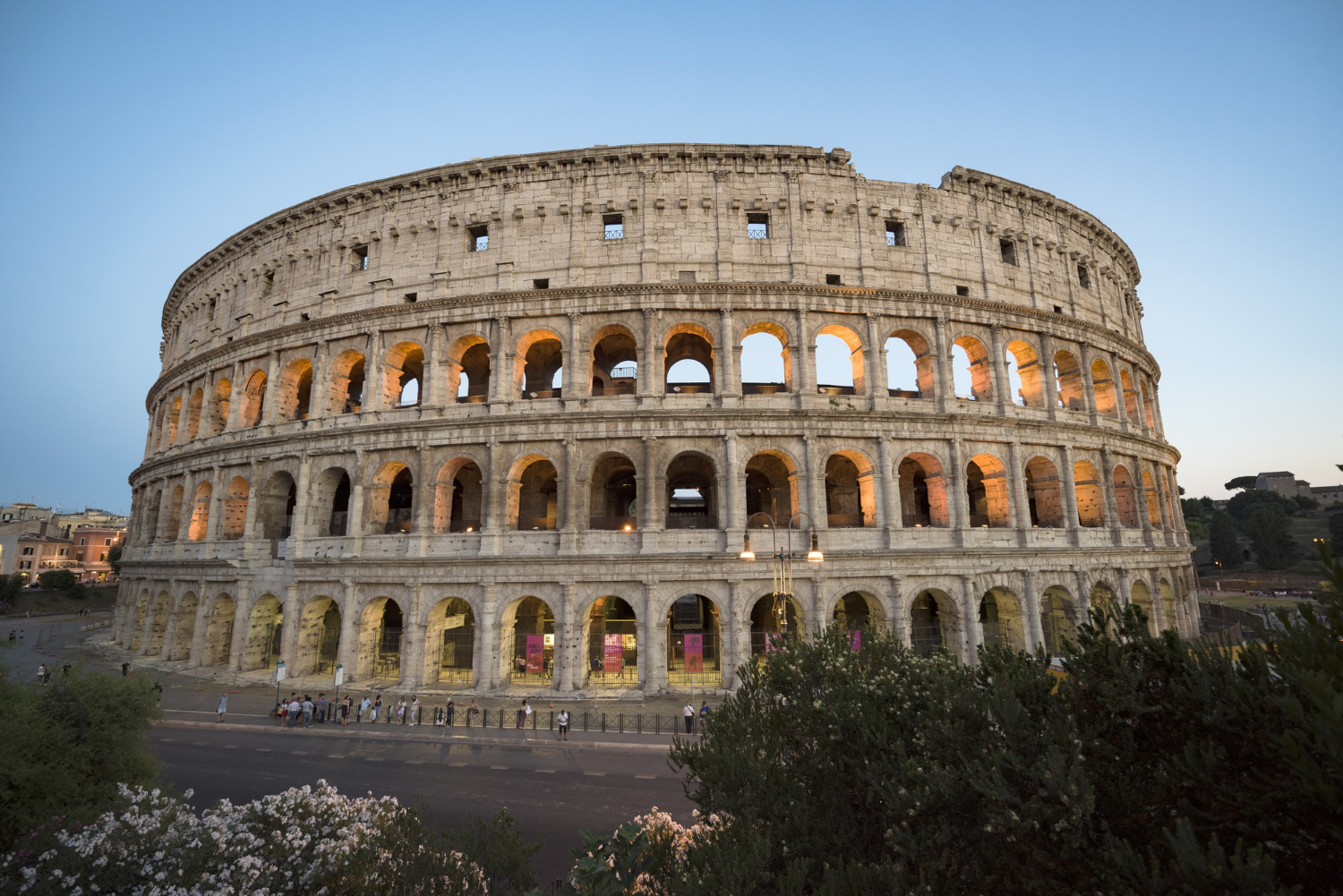
Table of Contents
Day 1: Arrival in Rome
Best trip to Italy for 10 days: Your Italian adventure begins in Rome, the Eternal City. Upon arriving at Fiumicino Airport, you’ll find that taking a taxi or a pre-booked shuttle service is the easiest way to reach your accommodation in the city center. After checking in, take a leisurely evening stroll through the historic heart of Rome. The Spanish Steps, Piazza Navona, and Trevi Fountain are stunning when illuminated at night. End your evening with a delicious Italian dinner at a local trattoria—try the cacao e pepe for an authentic Roman experience.
Day 2: Exploring Ancient Rome
Kick off your first full day with a visit to some of Rome’s most iconic ancient sites. Start at the Colosseum, where you can almost hear the echoes of gladiators from centuries past. Just a short walk away, the Roman Forum and Palatine Hill offer a glimpse into the daily life of ancient Romans. For lunch, grab a bite near the Pantheon, another architectural marvel that has stood the test of time. Don’t forget to indulge in some gelato from Giolitti, one of Rome’s oldest gelaterias.
Day 3: Vatican City and Trastevere
No trip to Rome would be complete without visiting Vatican City. Arrive early to beat the crowds at the Vatican Museums and admire the Sistine Chapel’s ceiling, painted by Michelangelo. St. Peter’s Basilica is equally awe-inspiring, and the climb to the top of the dome rewards you with panoramic city views. In the afternoon, head to Trastevere, a charming neighborhood known for its narrow cobblestone streets, lively piazzas, and authentic Roman eateries. End your day with a drink at a local bar, soaking in the vibrant nightlife.
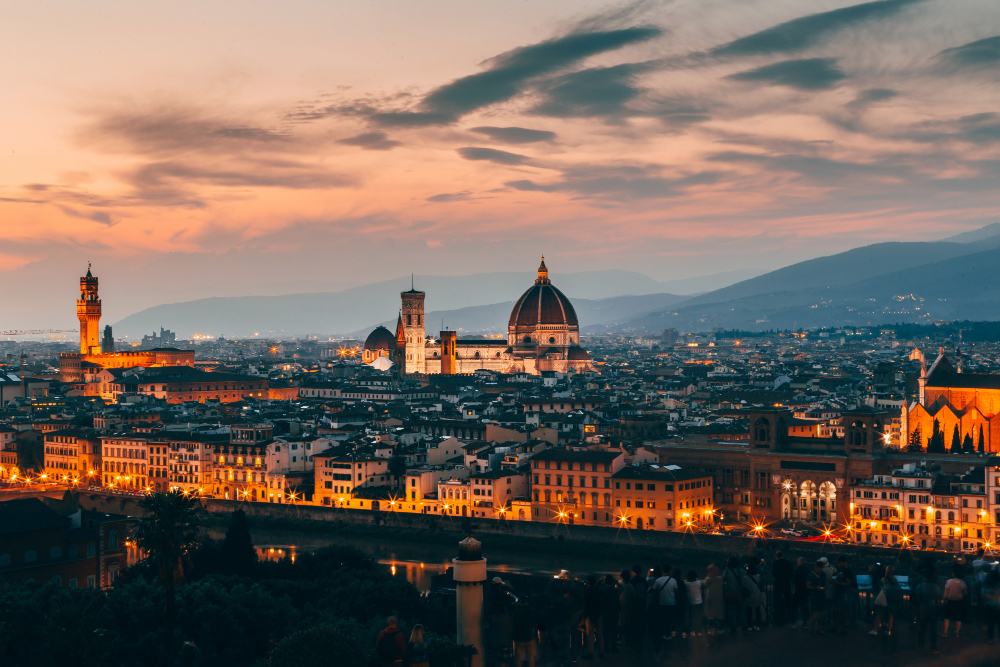
Day 4: Day Trip to Florence
On Day 4, catch an early train to Florence, the cradle of the Renaissance. Upon arrival, head to the Uffizi Gallery to see masterpieces by Botticelli, Leonardo da Vinci, and Michelangelo. Afterward, visit the Florence Cathedral (Duomo) and its famous dome, designed by Brunelleschi. Don’t miss the nearby Baptistery with its bronze doors, known as the Gates of Paradise. Spend the afternoon wandering the charming streets of Florence, crossing the iconic Ponte Vecchio, and enjoying the city’s vibrant atmosphere.
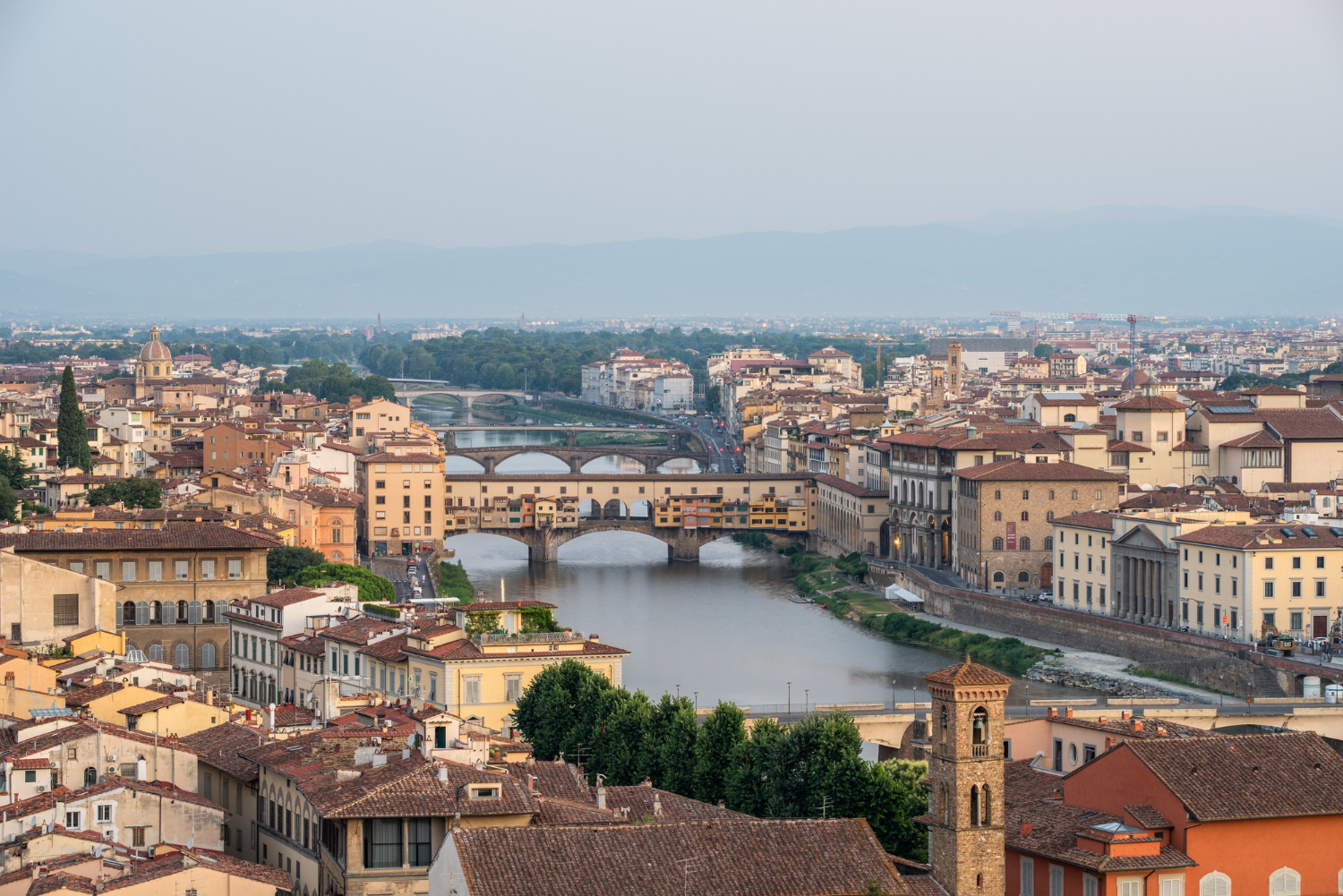
Day 5: Venice – The Floating City
Leave Florence behind and hop on a morning train to Venice, a city like no other. Check into a canal-side hotel and spend the day exploring the city’s unique architecture. A gondola ride is a must-do for any first-time visitor, offering a romantic view of Venice’s charming canals. Visit St. Mark’s Basilica, known for its stunning mosaics, and the Doge’s Palace, which offers insight into the city’s rich history. As the sun sets, take a leisurely walk along the Grand Canal.
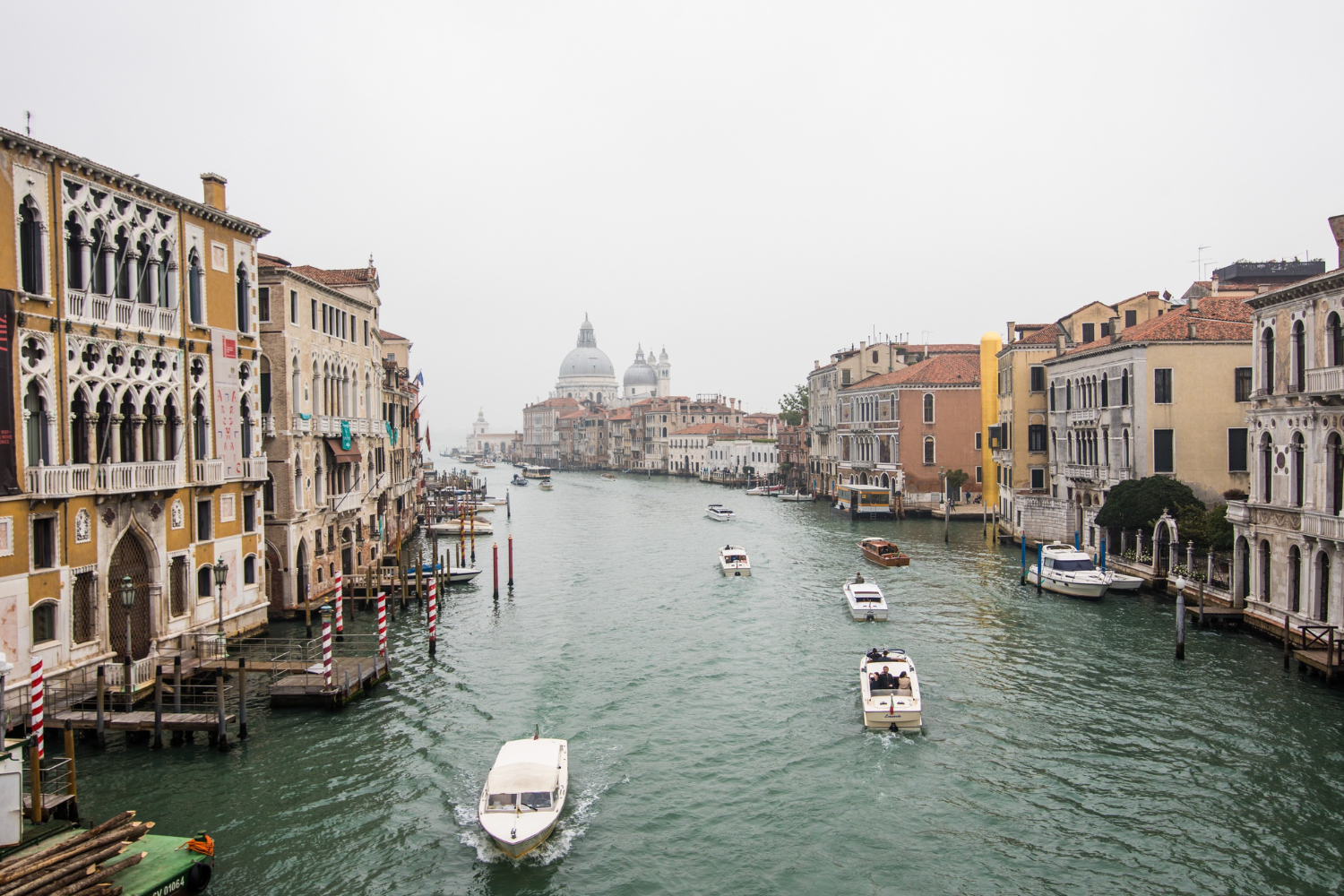
Day 6: Discovering Florence and Tuscany
Spend your second day in Florence visiting the Accademia Gallery, home to Michelangelo’s David. Following this, take a walking tour of Florence’s other highlights, including Piazza della Signoria and the Medici Chapels. In the afternoon, escape the city for a few hours to explore the rolling hills of Tuscany. Join a wine-tasting tour and visit a local vineyard to sample some of the region’s finest wines. Return to Florence in the evening for a relaxing stroll and dinner.
Day 7: Exploring Venice’s Islands
Dedicate Day 7 to explore the lesser-known islands of Venice. Start with Murano, famous for its glassblowing traditions. Watch artisans create intricate glass pieces, and perhaps buy a souvenir to take home. Next, head to Burano, known for its brightly colored houses and lace-making workshops. Finally, visit Torcello, one of the oldest settlements in the Venetian lagoon, where you can explore its ancient cathedral and peaceful surroundings. End the day with a sunset boat ride back to Venice.
Day 8: Travel to the Amalfi Coast
On Day 8, travel south to the stunning Amalfi Coast. Take a train from Venice to Naples, then transfer to Positano, a picturesque town known for its cliffs and pastel-colored houses. After checking into your accommodation, spend the afternoon relaxing on the beach or wandering through the town’s winding streets. In the evening, enjoy dinner at a cliffside restaurant with views of the Mediterranean Sea.
Day 9: Amalfi Coast Adventure
Your ninth day is dedicated to exploring the beauty of the Amalfi Coast. Start with a visit to Ravello, a town famous for its music festivals and beautiful gardens, such as Villa Rufolo and Villa Cimbrone. Continue to Amalfi, where you can explore the stunning Cathedral of St. Andrew and taste some of the region’s famous limoncello. In the afternoon, take a boat tour along the coast, discovering hidden beaches and sea caves. Return to Positano for a final sunset dinner.
Day 10: Departure
Spend your last morning in Italy enjoying the peaceful atmosphere of Positano. Take some time for last-minute shopping or a final dip in the sea before packing up. Depending on your flight schedule, you can either return to Naples or Rome for your departure. As you leave Italy, take with you the memories of an unforgettable journey filled with history, culture, and breathtaking landscapes.
Travel Tips for Italy
To make the most of your trip, consider visiting Italy during the shoulder seasons of spring (April to June) or fall (September to October). The weather is pleasant, and the tourist crowds are thinner. Italy has an excellent train system, making it easy to travel between cities. Renting a car is ideal for exploring the Tuscan countryside or the Amalfi Coast. While English is widely spoken, learning a few basic Italian phrases can enhance your experience.
Budgeting for Your Italian Adventure
A 10-day trip to Italy can vary greatly in cost depending on your travel style. Budget travelers can expect to spend around $100-$150 per day, while those looking for more luxury might spend upwards of $300 per day. Saving money is possible by staying in budget accommodations, eating at local trattorias, and taking advantage of free walking tours. However, don’t hesitate to splurge on unique experiences like a gondola ride in Venice or a wine tour in Tuscany.
Cultural Etiquette and Safety Tips
Italians are known for their hospitality, but there are a few cultural norms to keep in mind. Dress modestly when visiting churches, and avoid making loud noises in public places. Tipping is appreciated but not mandatory—rounding up the bill or leaving a few extra euros is sufficient. While Italy is generally safe, keep an eye on your belongings in crowded tourist areas to avoid pickpocketing.
Conclusion
A 10-day trip to Italy offers a perfect blend of cultural immersion, historical exploration, and relaxation. Whether you’re wandering through ancient ruins, enjoying a glass of Chianti in Tuscany, or soaking up the sun on the Amalfi Coast, Italy has something to offer every traveler. Use this itinerary as a guide, but don’t be afraid to veer off the beaten path and create your Italian adventure. Buon viaggio!
Click this link to learn about
Frequently Asked Questions (FAQs)
The best time to visit Italy is during the spring (April to June) and fall (September to October) when the weather is mild and the crowds are smaller.
Italy has an excellent train network for traveling between major cities. For exploring rural areas like Tuscany or the Amalfi Coast, renting a car is recommended.
Yes, Italy is generally safe for solo travelers. However, it’s important to stay vigilant in crowded tourist areas to avoid pickpocketing.
How can I avoid tourist traps in Italy?
Be sure to try regional specialties like pizza in Naples, pasta in Rome, Florentine steak in Florence, and seafood along the Amalfi Coast.
To avoid tourist traps, dine at local trattorias away from popular tourist sites, and explore less-visited neighborhoods for a more authentic experience.



